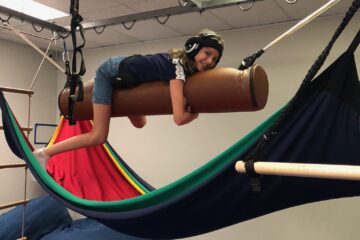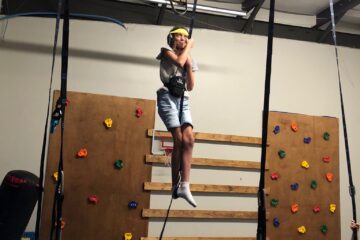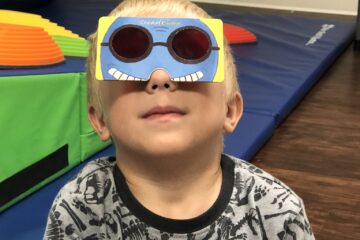Sensory Integration
Sensory integration describes how the brain receives and processes sensory information to then organize it to allow us to respond appropriately.
The five senses we are familiar with are:
- Vision – visual perception
- Hearing – auditory perception
- Touch – tactile perception
- Smell – olfactory perception
- Taste – oral perception
Occupational therapists also address three additional senses, of which you may not be so familiar. They are:
- Proprioception - gathering information about the body in space, particularly from muscles, joints, and ligaments
- Vestibular - information received from our body’s movement, head positioning, and spatial orientation, gathered from receptors in the inner ear
- Interoception - information received from visceral receptors, for instance hunger or having to use the bathroom
These sensations allow us to participate in our daily activities. Every person processes, organizes, and responds uniquely to sensory stimulation. It is the way the brain processes and organizes that information that allows us to respond appropriately. Some people require a large amount of sensory input to process a stimulus, whereas others a little stimulation goes a long way. We may under or over respond to such information, which may present in maladaptive responses. This is when sensory integration can be addressed through skilled occupational therapy services.
What do OT's do?
As adults, we may have developed our own coping strategies to tolerate and adapt to stimuli in our environment. For instance, you may wear gloves when cleaning because you do not like to touch the wet rag. Another example is when you feel the need to relax, you may go for a run where others will sit and meditate. We all process sensory information differently, it is when we are unable to tolerate and respond appropriately where it impacts our daily performance. Children may need assistance with developing appropriate responses to sensory input, which is where our occupational therapists come in!
At Mount Pleasant Pediatric Therapy, our occupational therapists will observe and address your child’s specific sensory needs to best promote functional participation in daily life. Your occupational therapist may suggest sensory strategies or a sensory diet to help your child organize and process daily sensory information in a way that is best fit for their brain processing. This may include adding or adapting your daily routines to better cope with life’s stimulation. It also may include strategies for those unpredictable times of stimulation, such as loud noises, a change in routine, or tolerating unexpected movement. Sensory integration is often a trial and error process as our sensory needs are constantly changing. The strategies and recommendations our therapists make are individualized to best suit the needs of your child within their natural environments and within their daily routines.
Auditory Processing
Auditory processing is a term used to describe what happens when your brain recognizes and interprets the sounds around you.
Find Out MoreInteroception
Have you ever been so hungry that your mood starts to change? Have you ever had to use the restroom so badly that that is all you can think about?
Read MoreOlfactory System
The olfactory system processes our sense of smell. Sensory receptors present in the nose receive input from our environment which then sends signals to our olfactory bulb located in...
Find Out MoreProprioceptive Input
Proprioceptive processing refers to information that comes from the muscles, joints and bones.
Find Out MoreVestibular
The Vestibular system helps our body interpret movement in relation to gravity (how fast you are moving, in what direction you are moving and whether or not you are moving at all)....
Read MoreVisual Processing
Visual processing or visual perception happens when the eye and the brain communicate and work together to help us interpret our physical surroundings using sight, or, what we see....
Find Out More




